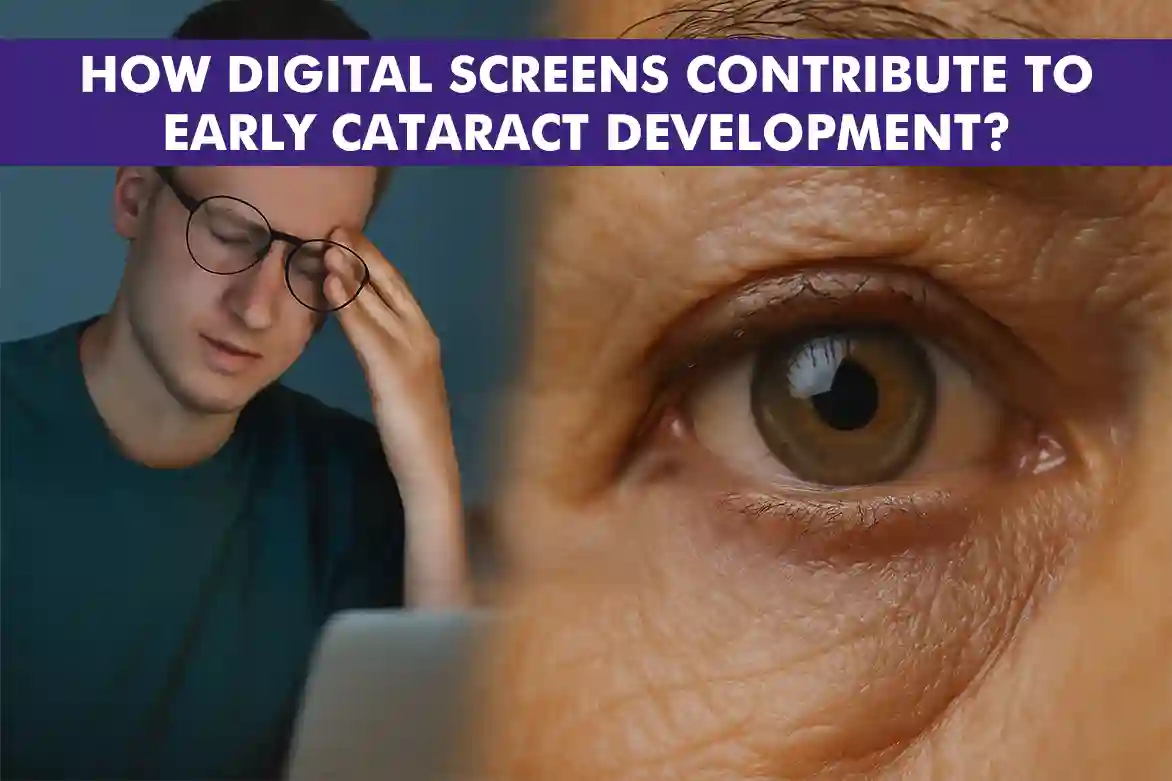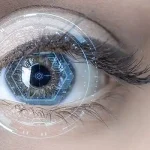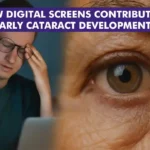In today’s digital age, screens are an integral part of our daily lives. From smartphones to laptops, our eyes are constantly exposed to digital displays. Whether we’re working, socializing, or simply unwinding with a movie, screens are always present, making it nearly impossible to avoid them. While these devices offer convenience and connectivity, they also pose hidden health risks, particularly to our eyes. The constant exposure can lead to a range of issues, from minor discomfort to more serious conditions. This blog aims to explore the connection between prolonged screen time and the early development of cataracts, shedding light on how our digital habits might be compromising our eye health. By understanding these risks, we can take steps to protect our vision and ensure that our reliance on technology doesn’t come at the cost of our well-being.
The Rise of Digital Device Usage: A Double-Edged Sword
The widespread use of digital devices has significantly changed how we live, work, and play, becoming essential to our daily routines. These devices offer unparalleled access to information and entertainment, connecting us with the world in ways unimaginable a few decades ago. We can learn new skills, stay informed with global news, and enjoy endless entertainment options. However, this convenience has a downside. Excessive screen time is increasingly linked to health issues, especially concerning our eyes. Eye strain and dry eyes are more common, and there’s growing concern about early cataract development. Constant screen exposure can lead to oxidative stress and damage to the eye’s lens over time. As reliance on digital devices grows, it’s crucial to understand their long-term effects on eye health. By doing so, we can better prepare to mitigate these risks and protect our vision for the future.
Understanding Cataracts: What Are They and Who’s at Risk?
Cataracts are a clouding of the eye’s natural lens, leading to decreased vision and, if untreated, blindness. They typically develop slowly and can affect one or both eyes. The most common causes are:
- Aging: The most common risk factor, as proteins in the lens break down over time, leading to cloudiness.
- Genetics: Family history can increase the likelihood of developing cataracts.
- Diabetes: High blood sugar levels can lead to changes in the eye’s lens, increasing cataract risk.
- Excessive Sun Exposure: UV radiation can damage the proteins in the lens, accelerating cataract formation.
- Smoking: Increases oxidative stress in the eyes, contributing to cataract development.
- Alcohol Consumption: Excessive drinking can lead to nutritional deficiencies and oxidative stress, affecting eye health.
- Eye Injuries: Trauma to the eye can lead to cataract formation, sometimes years after the injury.
- Certain Medications: Long-term use of corticosteroids and other medications can increase the risk.
- Obesity: Associated with metabolic changes that may contribute to cataract development.
- High Blood Pressure: Can affect blood flow to the eyes, potentially leading to cataracts.
- Previous Eye Surgery: Surgery for other eye conditions can increase the risk of cataracts.
Individuals who spend significant time on digital devices without taking preventive measures may be at a higher risk of developing cataracts early.
The Science Behind Screen-Induced Eye Strain
Digital eye strain, often referred to as computer vision syndrome, arises when the eyes become tired due to extended periods of screen exposure. This condition manifests through various symptoms such as persistent headaches, blurred vision, and discomfort in the neck area. The primary culprits behind this strain are the continuous adjustments the eyes must make to focus on digital screens, coupled with the harsh glare and stark contrast that these displays often present. These factors demand extra effort from the eyes, leading to fatigue and discomfort over time.
How Digital Screens Increase Cataract Risk?
Prolonged use of digital screens can significantly contribute to oxidative stress in the eyes, a condition where an imbalance between free radicals and antioxidants leads to cellular damage. This oxidative stress can specifically harm the proteins in the eye’s lens, making them cloudy and increasing the risk of cataract formation. One of the primary culprits in this process is the high-energy visible (HEV) light, commonly known as blue light, which is emitted in large quantities by digital screens. This type of light has a shorter wavelength and higher energy, allowing it to penetrate deeper into the eye, potentially causing more damage over time. Furthermore, the close proximity of screens to our eyes, combined with the extended periods we spend using them, exacerbates the potential for harm. This constant exposure not only strains the eyes but also accelerates the wear and tear on the lens, making it crucial to understand and mitigate these risks to protect our long-term eye health.
Blue Light Exposure: A Hidden Culprit
Blue light, part of the visible light spectrum, is emitted in large quantities by digital screens. While some exposure to blue light is natural and even beneficial, too much can harm the eyes. It penetrates deeply, reaching the retina and causing cellular damage. This penetration heightens oxidative stress, an imbalance between free radicals and antioxidants in the eye. Over time, this stress can lead to protein breakdown in the lens, resulting in clumping and the formation of cloudy areas known as cataracts. The high-energy nature of blue light speeds up this process, making it a key factor in early cataract development. As the lens becomes more opaque, vision blurs, underscoring the need to manage blue light exposure to safeguard long-term eye health.
Preventive Measures: How to Protect Your Eyes in a Digital World
- Use screen filters to reduce glare and minimize eye strain.
- Adjust screen brightness to match the lighting in your environment, preventing excessive eye fatigue.
- Follow the 20-20-20 rule: every 20 minutes, take a 20-second break and focus on an object 20 feet away to relax your eyes.
- Wear blue light blocking glasses to filter out harmful blue light and protect your eyes. Alternatively, set up comfort shield on your devices.
- Ensure proper lighting in your environment to reduce contrast and prevent eye strain.
- Even minor refractive errors (glass power) if ignored can increase digital eye strain. In case you have a minor glass power, you should consider wearing it.
Conclusion
In conclusion, while digital screens have revolutionized our lives, they also pose significant risks to our eye health. Understanding the connection between screen use and early cataract development is crucial for taking proactive steps to protect our vision.
By adopting healthy screen habits and preventive measures, we can enjoy the benefits of technology without compromising our eye health.
FAQs
While excessive screen time alone may not directly cause cataracts, it can significantly increase the risk by contributing to oxidative stress and eye strain.
Blue light, in particular, plays a role in this process by penetrating deep into the eye and causing damage to the lens.
To reduce cataract risk from screens, individuals should take regular breaks, use blue light filters, and maintain a healthy lifestyle.
Blue light glasses can provide added protection, although their effectiveness varies, and there is at present no conclusive scientific evidence to support it.
Regular eye checkups are essential for those who spend considerable time on screens to monitor eye health and catch any early signs of cataract development.





